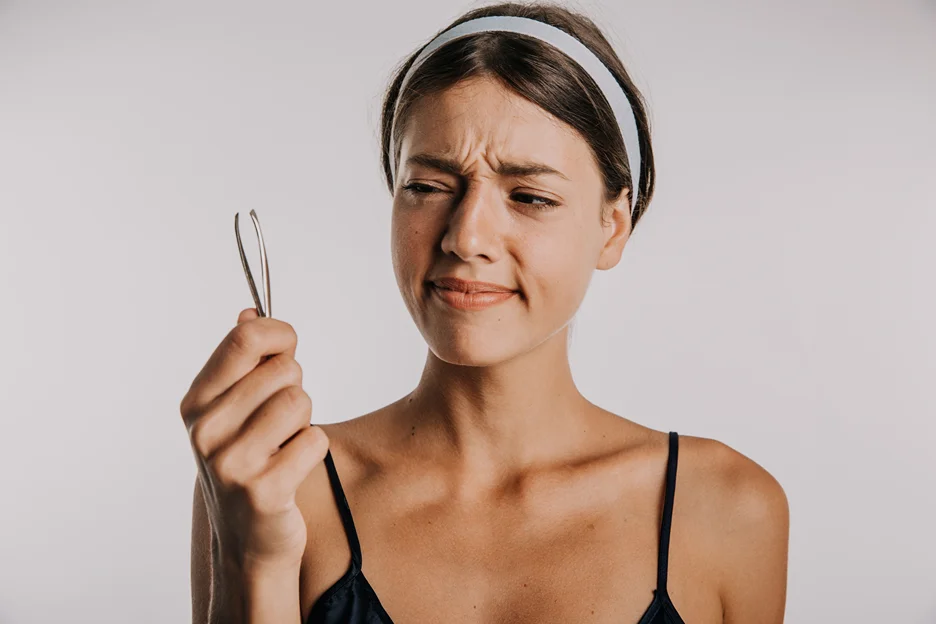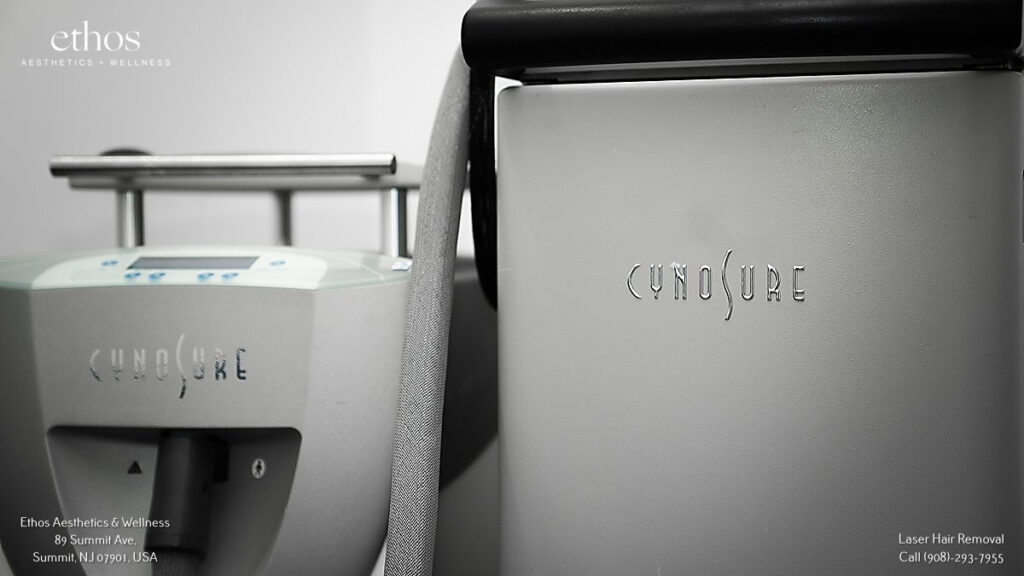Dealing with ingrown pubic hair can be both uncomfortable and frustrating.
In this guide, Dr. Soni will share the six best ways to effectively address this common issue. From preventive measures to safe removal techniques, you’ll discover practical tips to keep your skin smooth and irritation-free.
Let’s dive into the solutions to ensure a more comfortable grooming experience.
What causes ingrown hairs in the pubic area?
Ingrown hairs often occur due to improper hair removal techniques such as shaving, waxing, or plucking. The irritation can lead to inflammation of the hair follicle, creating a risk for infection.
What are the signs and symptoms of ingrown hair?
According to Dr. Soni, common signs include redness, itch, and a small bump that may contain pus. In more severe cases, the inflammation can lead to edema and cause significant pain.
How can you treat an infected ingrown hair in the pubic area?
Topical antibiotics like Benzoyl Peroxide can be applied directly to the infected area to reduce bacteria. A warm compress can also soothe inflammation and promote drainage of pus. Call our office at (908) 628-1916 if you need professional advice or help.
6 Best Ways to Deal with Ingrown Pubic Hair

Ethos Aesthetics + Wellness recommends these six ways to remove ingrown pubic hair:
1. Stop shaving, waxing, and plucking
If you feel an ingrown hair bump causing you irritation and pain in the vaginal area, Dr. Soni recommends that you stop shaving, plucking, or waxing until the bump goes away.
Continuing to remove hair will aggravate the sensitive area, and may cause an infection or a scar. You should also avoid doing the following:
- Digging into the skin.
- Pulling or picking at the ingrown hair.
- Squeezing or popping the bumps.
2. Apply a warm compress
A warm compress will also help bring out the ingrown hair so you can remove it easily. Run a clean washcloth under hot water, then press it against the bump in a circular motion for 3-4 minutes. Once the washcloth cools, run it under hot water and repeat the process. This will open up the follicles so you can pluck out the ingrown hairs.
3. Gently tweeze out the hair when it appears
With a pair of sterile tweezers, gently pull the hair that emerges. You can draw out the top of the hair with a needle. Make sure that the tip is out of the skin before waiting to pluck it out completely.
The area needs to heal first, or else the skin will heal over the hair follicle underneath. Avoid digging or breaking into the area because this may cause an infection.
4. Exfoliate regularly
Dr. Soni stresses the importance of exfoliating regularly. Gently washing, exfoliating, and rubbing around the bumps everyday can guide the hair to return to the skin’s surface.
With a wet washcloth, rub around the bump in a circular motion. This can also dislodge any dirt, oils, or dead skin cells that trap the ingrown hair.
Over-the-counter (OTC) products and home remedies are also a great way to relieve bumps and prevent ingrown hairs. Here are some effective remedies to try:
- Salicylic or glycolic acid: These products can keep your hair follicles open to prevent hair from getting trapped. It’s best to avoid them if you currently have ingrown hair, since these substances may cause irritation.
- Benzoyl peroxide cream: This acne medicine can reduce the redness and inflammation in the affected area.
- Tea tree oil: Another acne medicine, tea tree oil can kill bacteria and bring down swelling. Dilute the oil with water and apply to the affected area with a cotton ball.
- Baking soda: Baking soda can reduce inflammation in the skin. In one cup of water, mix a tablespoon of baking soda. Apply this with a cotton ball then rinse with cold water.
- Sugar: Sugar is a natural exfoliator that can kill bacteria. Make a paste with half a cup of brown or white sugar and olive oil, then apply on the area in a circular motion. Let it sit for 10 minutes then wash with warm water.
5. Use ointments or creams to reduce inflammation
Inflammation, redness, and discomfort may be caused by ingrown pubic hair, so you can call your doctor to prescribe an ointment or cream that can reduce the swelling and irritation.
A topical steroid cream can help you soothe the itchiness and lower the risk of infection. Other creams your doctor may prescribe are:
- Witch hazel
- Aloe vera
- Anti-itch cream
- Hydrocortisone
- Benzoyl peroxide
6. Use retinoids to clear up dead cells
If you’re concerned about the dark patches that formed because of the ingrown hair, you can use retinoids like tretinoin (Retin-A or Renova) to clear up the dead skin cells. Moisturize well after applying retinoids because these substances can cause dryness.
How to Prevent Ingrown Pubic Hairs
The best way to prevent ingrown hair is to avoid removing the hair altogether. However, this doesn’t work for everybody. If that is the case for you, here are some tips from Dr. Soni to prevent ingrown pubic hairs:
1. Prepare yourself before shaving.
When you shave dry hair, sharp edges are created and these are more likely to grow back into the skin and become ingrown. This is why it’s important to first wash and rinse the pubic hair with warm water and mild soap before shaving. You can use a warm, damp compress too.
Next, apply shaving cream or gel to soften your hair. Make sure to choose a lubricating product that is designed for the sensitive genital area. Other products containing chemical exfoliants such as glycolic, lactic, or salicylic acid can help dissolve the dead skin cells that trap ingrown hairs, so try to find one that contains these substances.
2. Choose the right tools.
Are electric shavers better for preventing ingrown hairs?
Electric shavers can be gentler on the skin compared to razors, reducing irritation. However, they may not cut as close to the skin, leading to less smooth results.
Avoid using a dull razor when you shave. With a dull razor, you need to go over the skin more than once, which may lead to ingrown hairs and infection. Replace your razor after a few uses to ensure clean, precise cuts.
Don’t forget to rinse the blade after each stroke, since this adds lubrication while you shave. You also get rid of the shavings that clog the blades, which make it harder to remove hair in one swipe.
3. Be gentle when removing hair.
It’s best not to go against the grain when shaving. Going against the grain will get you a close shave, which makes it easier for the hair to curl back into the skin.
Additionally, stretching your skin tight when shaving can also cause ingrown hairs. The tips of the remaining hair can shrink back easily, so let your skin sit naturally while shaving. You should also moisturize your skin after shaving so it remains smooth and hydrated.
Is plucking an effective way to remove ingrown hairs?
Dr. Soni says that plucking can provide immediate relief but it can also increase the risk of infection and scar formation. Use sterilized tweezers and antiseptics like rubbing alcohol if you plan to pluck it.
Is moisturizing important for preventing ingrown hairs?
Moisturizing reduces the possibility of irritation because it fortifies your skin’s protective barrier. It’s especially good to moisturize if you use a chemical exfoliant for hair removal, since these cause dryness when used frequently.
4. Consider alternative removal options.
As an expert in the realm of aesthetics, Dr. Soni advises that there are plenty of alternative options for hair removal. Shaving, waxing, and tweezing aren’t the only hair removal options available in the market. There are safe, technologically advanced solutions to get rid of unwanted body hair such as:
- Electrolysis: Electrolysis is a permanent hair removal solution that utilizes tiny needles with an electric current to treat the follicles. It’s an FDA-approved treatment that requires several sessions for maximum results.
- Chemical removers: The pubic area is more sensitive compared to the other areas of the body, so chemical removers should be treated with caution since these can irritate sensitive skin. You can test the remover on a small area of your body to see if a reaction will take place, before applying it to your pubic area.
- Laser hair removal: Though this procedure is a more expensive option, it can treat follicles at a deeper level. Hair either grows lighter and finer than before, or doesn’t grow back at all. When performed by a licensed doctor or technician, laser hair removal is an effective solution with few risks.
Are laser hair removal treatments effective for avoiding ingrown hairs?
Laser hair removal targets the hair follicle and is generally effective in reducing ingrown hairs. Ensure you consult a board-certified dermatologist for the procedure.
Is waxing a good option for preventing ingrown hairs?
Waxing can minimize the likelihood of ingrown hairs as it removes the hair from the root. However, it can also cause irritation and be painful, especially on sensitive skin.
Can over-the-counter drugs treat ingrown hairs?
Over-the-counter products like hydrocortisone cream or a topical antipruritic can help in reducing itch and irritation. Always read the ingredient list to ensure you’re not allergic to any components.
When To Consult With Your Doctor

In most cases, ingrown pubic hair disappears on its own. However, problems may arise if it doesn’t go away and becomes infected. Signs on an infected ingrown hair include darkened skin and painful, pus-filled bumps in the area.
The chance of infection increases if a patient continues to scratch and pick at the infection site. If you notice signs of infection, consult with your doctor immediately.
For safe hair removal options, visit us at Ethos Spa. Our team, headed by Dr. Soni has done laser hair removal for years on countless patients, so we know the ins-and-outs of this procedure.
We’re committed to helping our patients remove unwanted hair in the safest and most efficient way possible. Book a consultation with us to learn more.
Frequently Asked Questions About Ingrown Pubic Hair
What topical medications can be used to treat ingrown hairs?
Over-the-counter topical solutions containing Salicylic acid or Hydrocortisone can be used. For more severe cases involving infection or skin conditions, a prescribed antibiotic cream may be necessary.
How should you exfoliate to prevent ingrown hairs?
Gentle exfoliation using a scrub or chemical substance like Glycolic Acid can help in removing dead cells and freeing trapped hairs. Always moisturize afterward.
Can traditional medicine provide solutions for ingrown hairs?
Tea tree oil is often cited in traditional medicine for its antiseptic properties and may help in treating minor infections. However, its efficacy isn’t universally supported by scientific evidence.
How should you prepare the skin before hair removal?
It’s crucial to clean the skin with a mild soap and to apply a shaving cream or gel before using a razor. This minimizes irritation and the chances of hairs growing back into the skin.
What do healthcare professionals recommend for persistent ingrown hairs?
For chronic or severe cases, consult a health professional for diagnosis and treatment options which may include corticosteroid injections or surgical removal using a scalpel.







